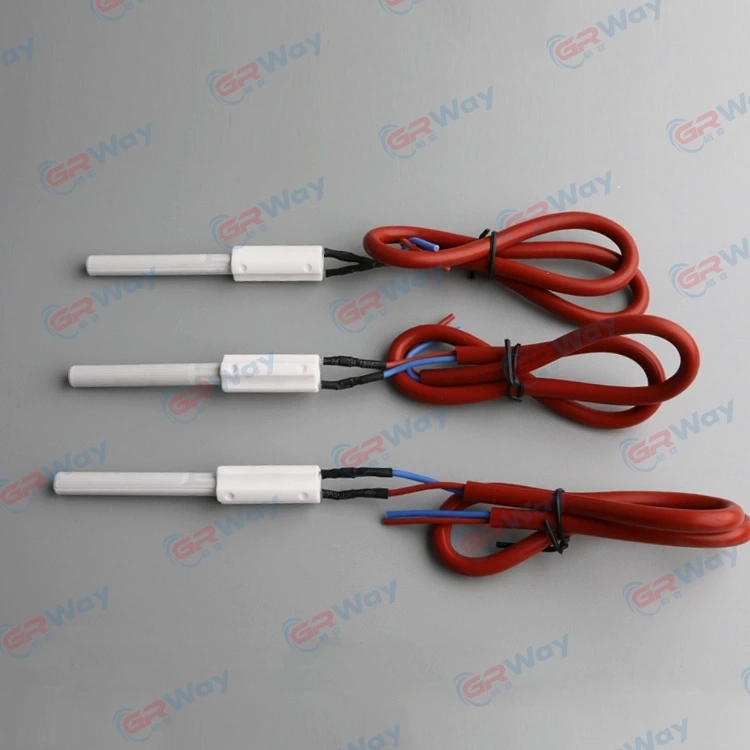Analysis of daily use principle of Ceramic Pellet Igniter
Ignition method: The ignition mode of the gas stove mainly includes electronic pulse ignition and piezoelectric ceramic ignition. The embedded furnace adopts the electronic pulse ignition mode. When it reaches a certain location, it catches fire. Its ignition hit rate is very high, generally 100%, but this way requires battery replacement. The desktop furnace adopts the piezoelectric ceramic ignition method, and the ignition success rate is greatly affected by the ambient humidity. When you need to ignite, you need to press the switch to ignite.
How to judge whether the ceramic ignition needle is normal?
The ignition pin is generally not easy to break. If the ignition pin is not discharging, there may be a dead battery or faulty pulse igniter, which is not necessarily an issue with the ignition pin. If a new battery is replaced, it is recommended to find the factory after sale. The ignition methods of gas ceramic ignition pins and ignition rods are mainly divided into piezoelectric ceramic ignition and electric pulse ignition. Most modern gas stove igniters are pulse igniters. The pulse igniter is a pulse high-frequency oscillator composed of electronic components. The high-frequency voltage generated by the oscillator is raised to a high voltage of 15KV through a step-up transformer. A discharge is carried out, and the spark on the gas stove is ignited by the discharge spark. The igniter is fired for a continuous discharge. The pulse igniter starts firing when the knob is pressed; the pulse stops firing when the knob is released.
How to determine whether the ceramic ignition needle is normal?
How to judge whether the ceramic ignition needle is normal?
The ignition pin is generally not easy to break. If the ignition pin is not discharging, there may be a dead battery or faulty pulse igniter, which is not necessarily an issue with the ignition pin. If a new battery is replaced, it is recommended to find the factory after sale. The ignition methods of gas ceramic ignition pins and ignition rods are mainly divided into piezoelectric ceramic ignition and electric pulse ignition. Most modern gas stove igniters are pulse igniters. The pulse igniter is a pulse high-frequency oscillator composed of electronic components. The high-frequency voltage generated by the oscillator is raised to a high voltage of 15KV through a step-up transformer. A discharge is carried out, and the spark on the gas stove is ignited by the discharge spark. The igniter is fired for a continuous discharge. The pulse igniter starts firing when the knob is pressed; the pulse stops firing when the knob is released.
How to determine whether the ceramic ignition needle is normal?
When the knob is pressed and a small flame is lit, the thermocouple is heated by its flame to create a thermoelectric potential. The thermoelectric potential is introduced into the electromagnetic coil through the wire, and a magnetic field is generated to make the electromagnetic valve inhale. Open the gas valve, open the combustion channel, and maintain normal combustion. When the ceramic ignition rod overflows with strong wind or soup, the flame goes out, and the thermal potential of the thermocouple is very high. It quickly drops to zero, the coil is de-energized, the solenoid valve fails and returns quickly with the action of the spring. The valve closes the gas passage and terminates the gas supply for safety.
Send Inquiry
X
We use cookies to offer you a better browsing experience, analyze site traffic and personalize content. By using this site, you agree to our use of cookies.
Privacy Policy




























